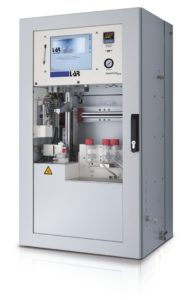De-icing of runways and aircrafts is necessary due to safety reasons since ice and snow negatively influence the weight and aerodynamics of an aircraft.
A mixture of chemicals - de-icing agents and thickening agents – is used to keep airports and planes free from ice and snow. These chemicals are mainly:
This highly adhesive chemical mixture works like a sponge so that a certain amount of the winter precipitation is absorbed and liquified.
These adhesive characteristics of waste water of de-iced surfaces are the main challenges to monitoring systems:
- Residual traces of previous sample water falsify the results of the current measurement (memory and/or cross-over effects)
- Systems that require filtration and/or are designed with thin sample tubes will require increased maintenance efforts due to clogging and blocking
Main goal is cost-effective water management and discharge. The least expensive way to discharge effluents is into public water bodies. However, the critical values for public discharge are very low:
Example: For the river Rhine (Germany) the discharge regulation stipulates 150 mg/l O2
Challenges of effluent discharge from airports
- Discharge into municipal WWTP requires stable outlet loads to optimize treatment processes
- Waste water from de-iced surfaces has strongly fluctuating loads
- Extremely high loads of up to 50,000 mg/l C are common










